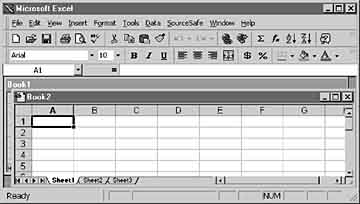Console Applications
Windowing Applications
There are three styles of user interfaces for Windowing applications: multiple-document interface (MDI), single-document interface (SDI) and the Windows Explorer interface.An SDI application, such as Notepad.exe, provides only one window. MDI applications, such as Microsoft Word, have the ability to provide multiple windows within a single parent window. Development languages, such as Visual Basic 5.0, allow you to quickly and easily create SDI or MDI applications.
When deciding which interface style to use, consider the purpose of the application. An application for processing insurance claims might lend itself to the MDI style because the user may work on more than one claim at a time or have to compare two claims. On the other hand, a calendar application would be best suited to the SDI style because users probably do not need more than one calendar open at a time.
Multiple Document Interface
Applications such as Microsoft Excel and Microsoft Word for Windows have MDI interfaces; they allow you to display multiple documents at the same time, with each document displayed in its own window. MDI applications usually have a Window menu item with submenus for switching between windows or documents. 
When developing MDI applications using Visual Basic, you can set a menu's WindowList property to True . When you select the WindowList check box in the Menu Editor for a Menu object, the list of open MDI child windows for the menu you are creating is displayed. Only one menu item per form can have its WindowList property set.
EAN: N/A
Pages: 324